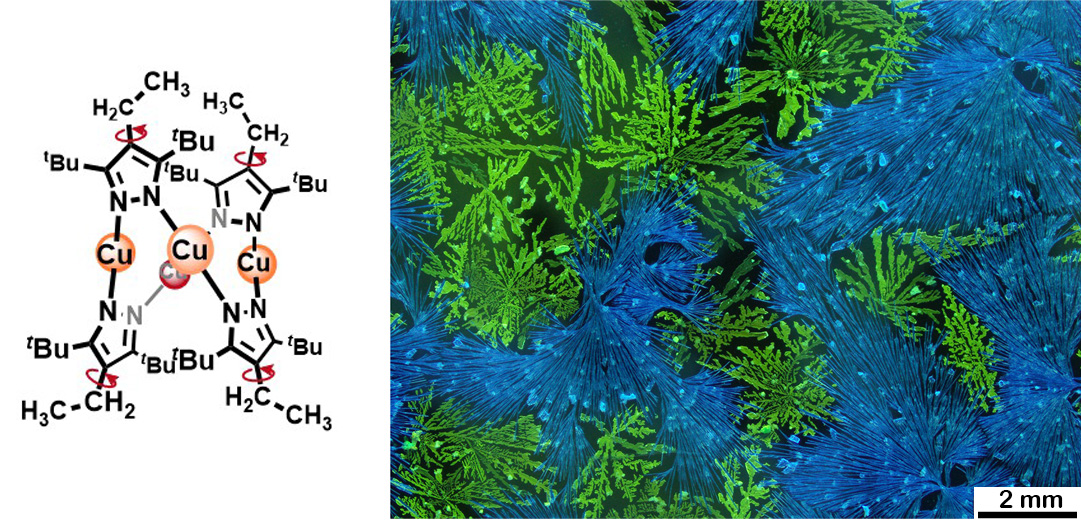Rigidochromic metal-azole macrocycles
Organic light-emitting devices (OLEDs) depend on chemically robust materials that emit at red, green and especially blue wavelengths. However, designing efficient phosphors that emit in the deep-blue region is challenging, as there are many ways for excited-state structures to relax into conformations with lower energies. We are investigating macrocyclic Cu(I) complexes whose excited-state structures are reinforced in ways that maintain high-energy emissions in the solid state. For example, in the Cu‒pyrazolate complex below the four metal atoms are close-packed and support cluster-centered (CC) orbitals responsible for deep-blue emission (458 nm). The conformational rigidity of excited-state structures (rigidochromism) is remarkably sensitive to steric factors at the periphery of these metal‒ligand complexes, offering novel opportunities to apply subtle chemical effects for tuning emission wavelengths.
Some luminescent complexes can switch reversibly between emission wavelengths in response to changes in physical or chemical environment. This phenomenon is again based on the rigidochromic behavior of the Cu‒azole macrocycles, whose conformational changes can drive the transition between polymorphs with different emission properties-- sometimes with stunning visual effect.

